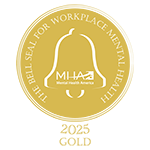A version of this article originally appeared in ROAR Forward as part of a collaboration with their quarterly ROAR Report. This is just a sneak peek at the thousands of consumer insights available to CivicScience clients. Discover more data.
The start of a new year often brings a surge in optimism, and early 2025 was no exception. CivicScience data found that many Americans began the year feeling hopeful, with a post-election honeymoon period – largely among Republicans – contributing to the boost. Americans 55 and older also stood out for their heightened optimism about their income prospects in 2025.
However, that optimism has faded sharply in recent weeks. Rising essentials costs, economic and governmental policy shifts, and the worst air American disaster in 15 years have begun to weigh heavily on consumers of all ages.
The impact of the busy and chaotic news cycle so far in 2025 is reflected in the CivicScience Well-Being Index (WBI), which has fallen steeply across the board. While Americans 55+ continue to lead in overall well-being, their WBI score slid 3.25 percentage points from December to February to hit 58.95% – the second-lowest reading since October 2023.
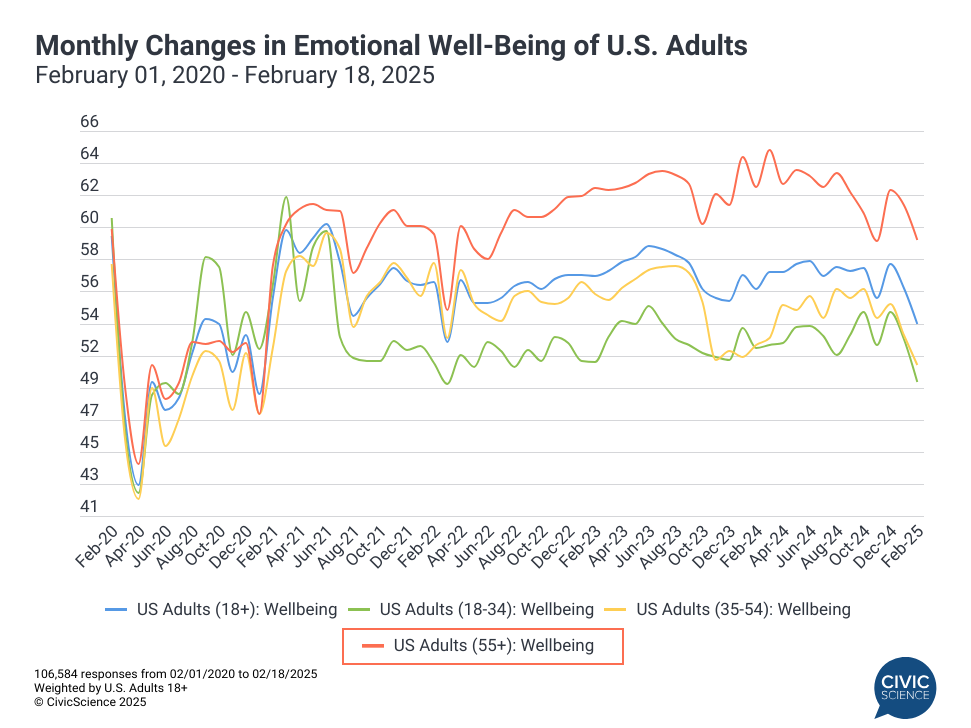
When it comes to the CivicScience Consumer Financial Health Index, Gen Pop scores higher than Americans 55+ (62.98 to 61.6, respectively). While both scores fell from January to February, the drop was not as steep among those 55 and up, thanks to a rise in their credit outlook, offsetting a deep decline in their investing outlook. It also coincides with a drop in economic sentiment.
Rising Costs and Political Worries Take A Heavy Toll
Nearly three-quarters of Americans 55+ are concerned about the rising cost of essentials, with this demographic expressing more concern than the general population by nearly 10 percentage points. The spike in food prices, particularly due to the bird flu and egg shortages, has only compounded fears, especially as anxiety over potential health crises – like a new pandemic – seems to be disproportionately affecting older Americans.
Another of the strong (yet unsurprising) sources of worry this year is politics. With the constant flow of news and the floated possibility of cuts to social programs like Medicare and Medicaid, more than half of Americans 55+ are worried about politics, outpacing the Gen Pop by eight percentage points. In what is likely a culmination of all the various worries explored below, nearly 3 in 10 are worried about a general increase in the level of stress this year.
At the other end of the spectrum, CivicScience has already seen that older Americans are the least likely cohort to feel any sort of loneliness. This appears to be carrying over into 2025. Finally, return to office has been a point of emphasis for employers in the post-pandemic world, but it’s not something that is of real concern for those 55+, likely skewed by retirees.
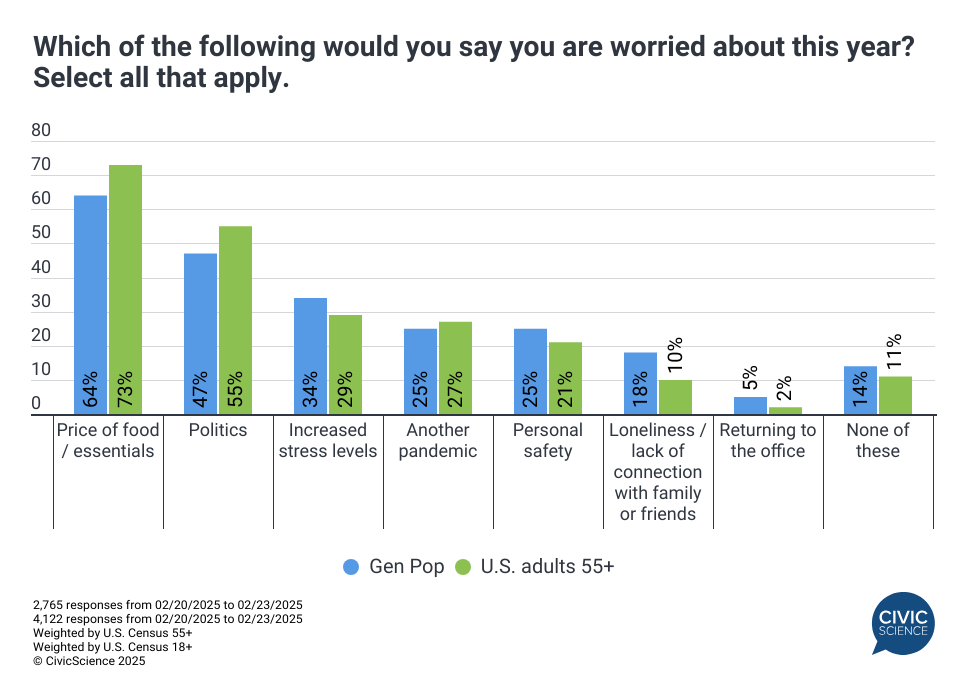
Let Us Know: Do you think your personal financial situation will get better or worse in 2025?
Adjusting to New Realities
Despite these challenges, older Americans are not passive in the face of financial strain. CivicScience data shows that this group is actively making adjustments to their spending habits. The most common actions include cutting back on non-essential shopping and dining out less, with just under two-thirds of respondents reporting reduced restaurant visits. A further majority are opting for more generic brands or using coupons and discount apps.
And while they may be dining out less, they’re less likely to sacrifice on ordering coffee or alcohol out, perhaps as they may tend to drink these beverages at home, to begin with. They are also less likely to prioritize cutting back on live entertainment, signaling that while they are adjusting their spending, they continue to value certain experiences.
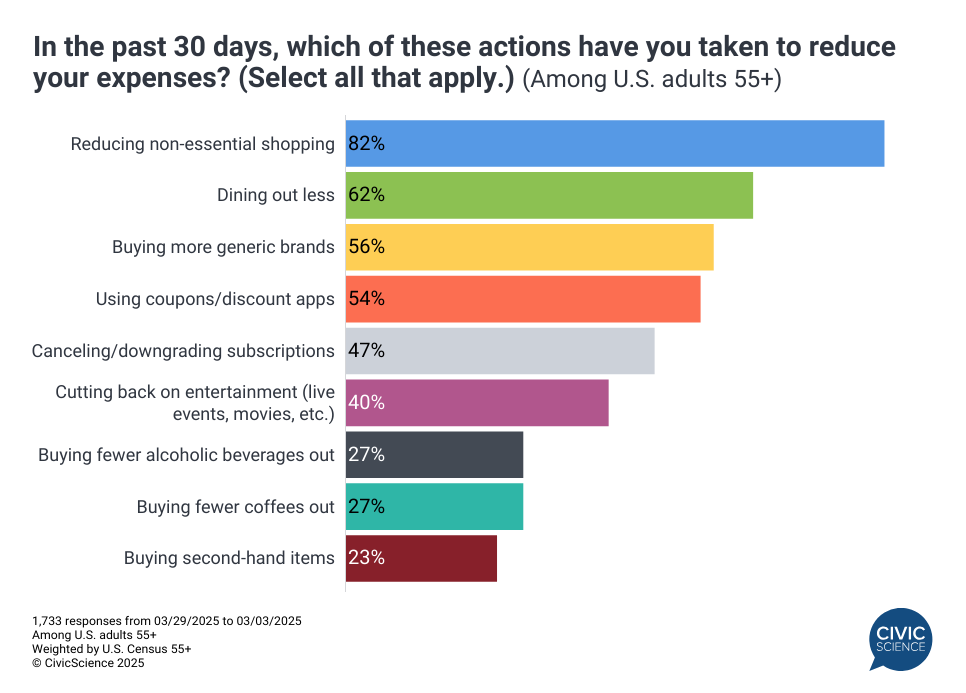
Use this Data: CivicScience clients use real-time data like this to identify what consumers prioritize in an uncertain economic climate, helping them stay ahead of trends that could impact customer growth and retention.
Personal Connections and Leisure Provide Excitement
Given the recent sharp downward trend in well-being, it makes sense to see personal connection and leisure take precedence as sources of excitement this year. Along those lines, roughly one-quarter are hoping for reduced stress levels, with a slightly higher percentage among Gen Pop. The overall population is notably more likely than the 55+ crowd in the workforce to have some level of excitement over job-related aspects.
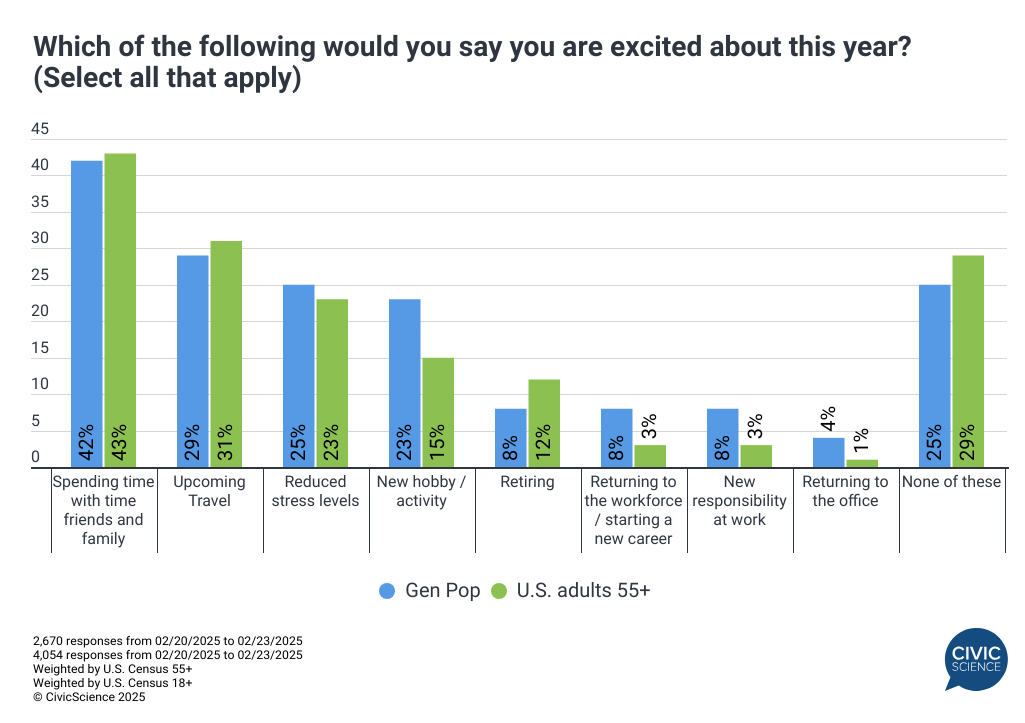
Let us Know: Are you excited for spring?
Despite mounting financial and political concerns, older Americans are finding ways to adapt – cutting back on non-essentials while prioritizing meaningful experiences like travel and time with loved ones. Whether these adjustments will be enough to stabilize their well-being remains to be seen, but their resilience suggests they are determined to make the most of the year ahead, even if it means cutting back in certain areas to make it happen. Retailers and brands seeking to connect with this demographic will need to balance value and flexibility, offering solutions that cater to both cautious consumers and those still eager to invest in experiences that bring joy and fulfillment.








